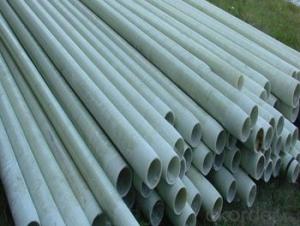Fiberglass cloth, a material that has become synonymous with strength and durability, is a versatile product that has found its way into various industries. From construction to aerospace, this wonder fabric has proven its worth time and again. But what exactly is fiberglass cloth, and how does it acquire its remarkable properties? Let’s unravel the layers of this fascinating material and discover its unfurled strength.
The Essence of Fiberglass Cloth
Fiberglass cloth, also known as glass-reinforced plastic (GRP), is made from thin strands of glass woven into a fabric. These strands are then saturated with a resin, which hardens to form a strong and stable composite material. The combination of glass fibers and resin creates a material that is lightweight, yet incredibly strong. It’s this unique blend that gives fiberglass cloth its versatility and makes it suitable for a wide range of applications.
A Weave of Strength and Flexibility
One of the most striking features of fiberglass cloth is its strength-to-weight ratio. It’s stronger than many traditional materials, yet it’s much lighter. This makes it an ideal choice for industries where weight is a critical factor, such as in the automotive and aerospace sectors. But it’s not just about strength; fiberglass cloth also boasts impressive flexibility. It can be molded into various shapes without losing its structural integrity, making it perfect for complex designs.
The Role of Resin
The resin used in fiberglass cloth plays a crucial role in determining its properties. There are different types of resins, each with its own characteristics. Polyester resin is a popular choice due to its versatility and cost-effectiveness. Vinyl ester resin, on the other hand, is known for its superior chemical resistance. The choice of resin can affect the cloth’s durability, resistance to environmental factors, and overall performance.
Applications Beyond Imagination
Fiberglass cloth’s applications are as diverse as its properties. It’s used in the construction of boats, where its lightweight and strong nature make it perfect for hulls. In the automotive industry, it’s used for body panels and other components that require a balance of strength and flexibility. The aerospace industry also utilizes fiberglass cloth for its ability to withstand extreme conditions while maintaining a low weight.
The Art of Laminating
The process of creating fiberglass cloth involves a technique called lamination. This involves layering the fiberglass cloth with resin and allowing it to cure under specific conditions. The number of layers and the orientation of the fibers in each layer can affect the final product’s strength and flexibility. Laminating is both an art and a science, requiring precision and expertise to achieve the desired outcome.
A Sustainable Choice
In today’s world, where sustainability is a key concern, fiberglass cloth stands out as an environmentally friendly option. It’s resistant to corrosion and doesn’t require frequent maintenance, reducing its overall environmental impact. Moreover, the raw materials used to produce fiberglass cloth are abundant and can be recycled, contributing to a circular economy.
The Future of Fiberglass Cloth
As technology advances, so does the potential for fiberglass cloth. Researchers are constantly exploring new ways to enhance its properties and expand its applications. From self-healing materials to energy-efficient structures, the future of fiberglass cloth looks promising. It’s a material that continues to evolve, pushing the boundaries of what’s possible.
Embracing the Unfurled Strength
Fiberglass cloth is more than just a material; it’s a testament to human ingenuity and the endless possibilities of innovation. Its unfurled strength is a reminder that sometimes, the most remarkable qualities can be found in the most unassuming of places. As we continue to explore and develop new uses for this versatile fabric, we’re not just creating stronger and more durable products; we’re also weaving a brighter future for ourselves and the planet.
So, the next time you come across a piece of fiberglass cloth, take a moment to appreciate the strength and versatility it represents. It’s a material that has truly earned its place in the tapestry of human innovation and progress.

